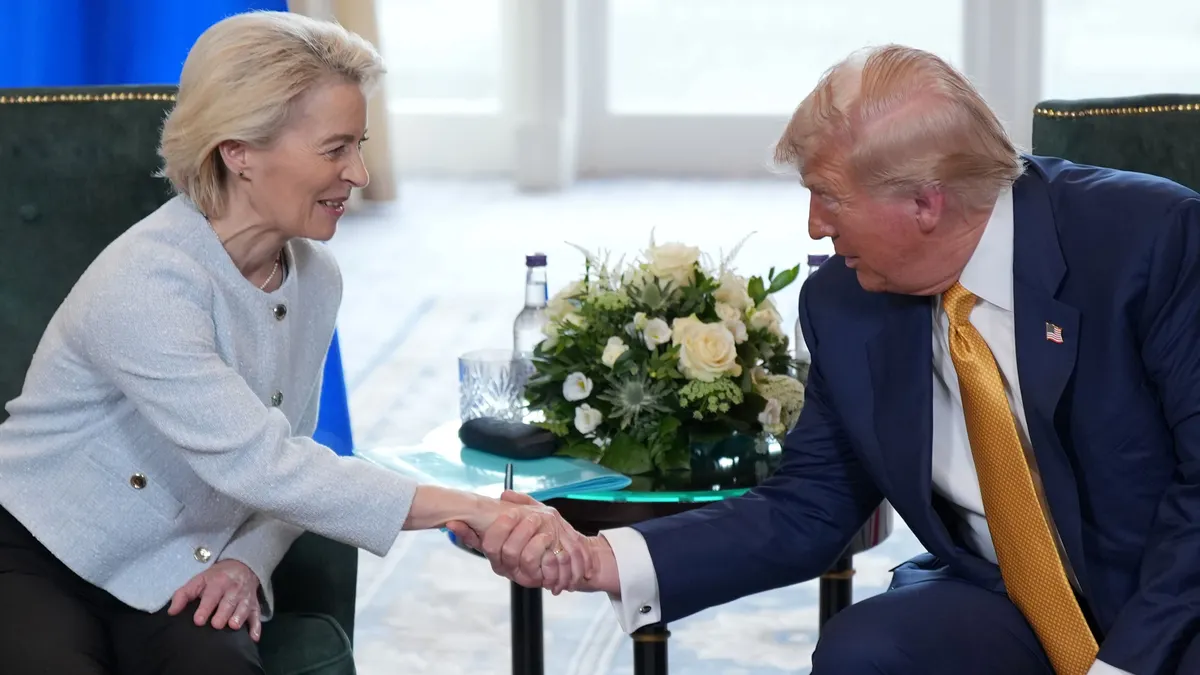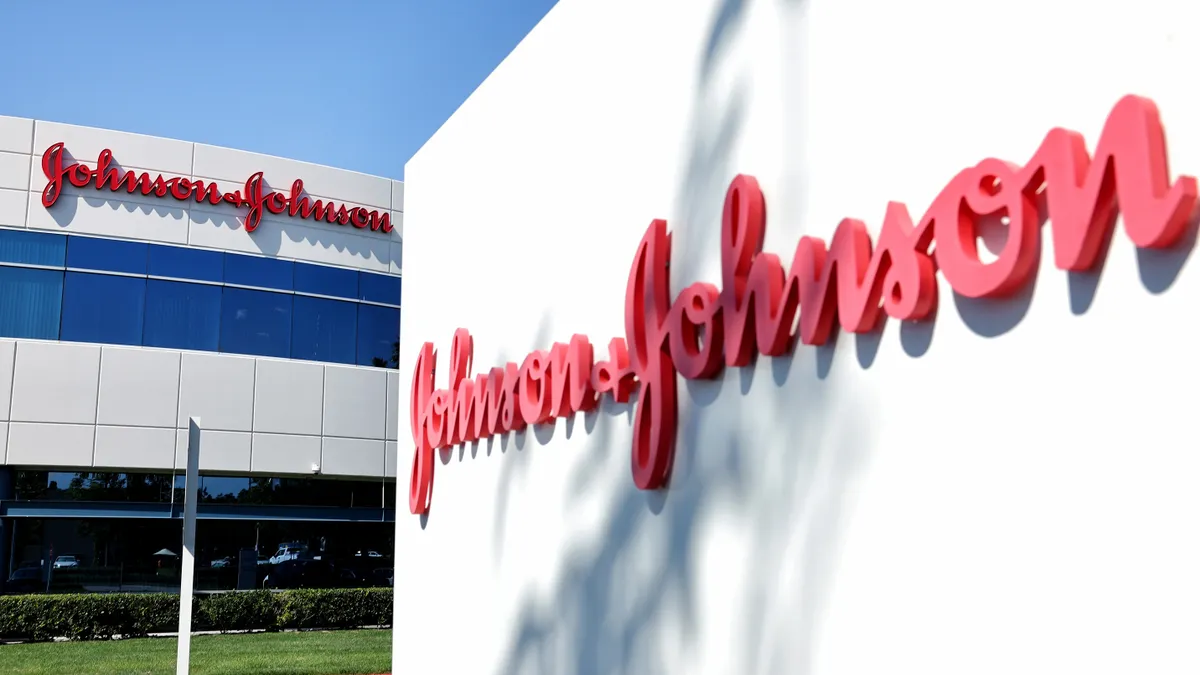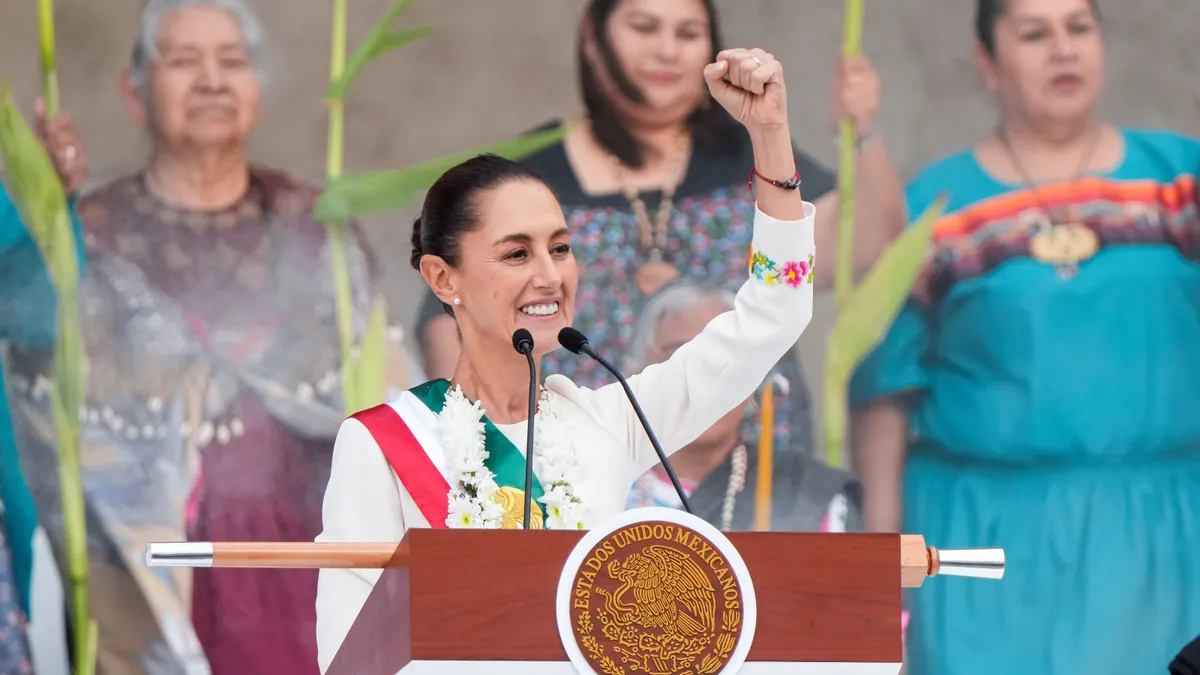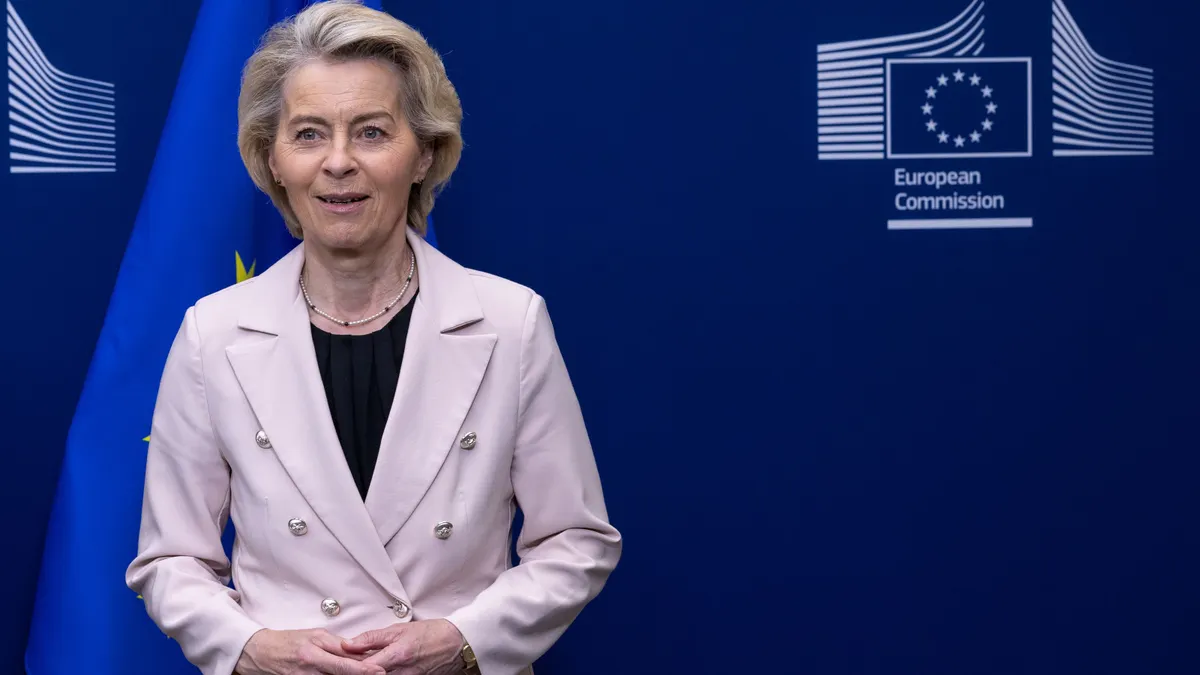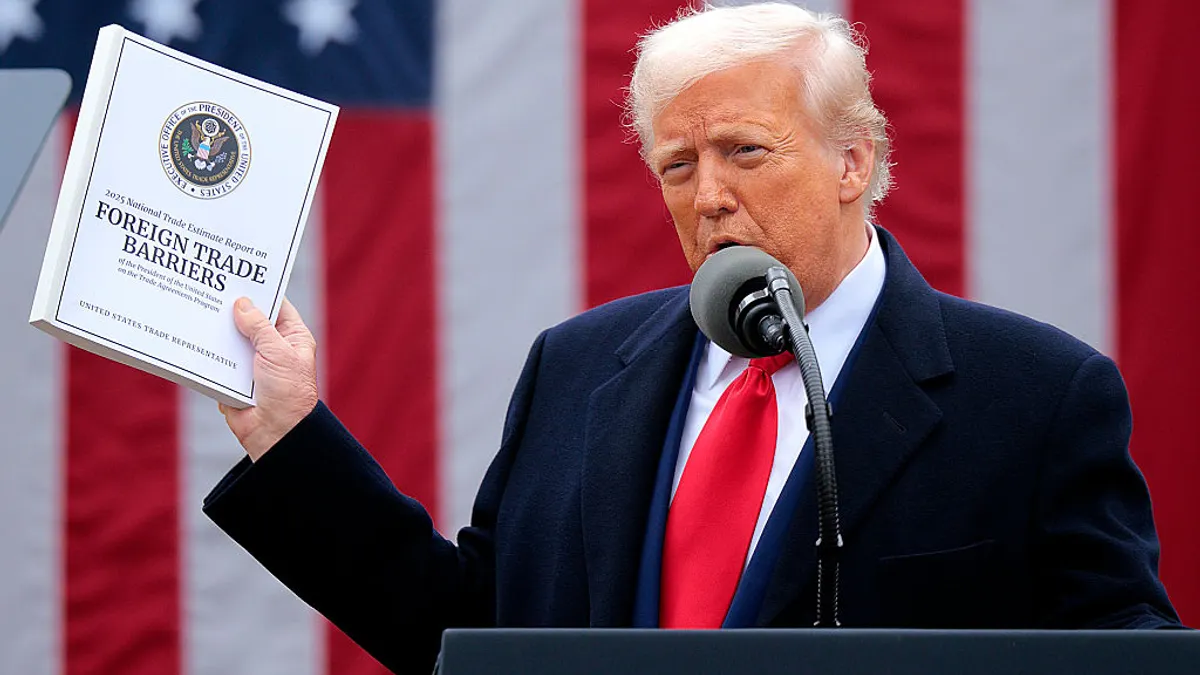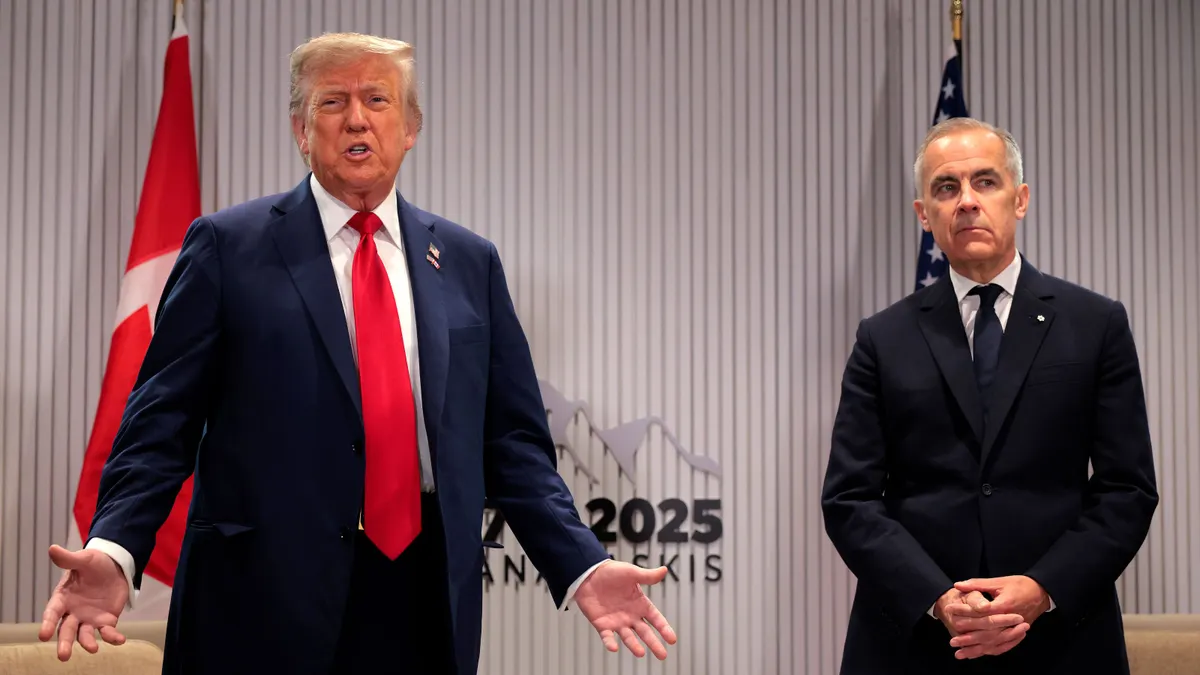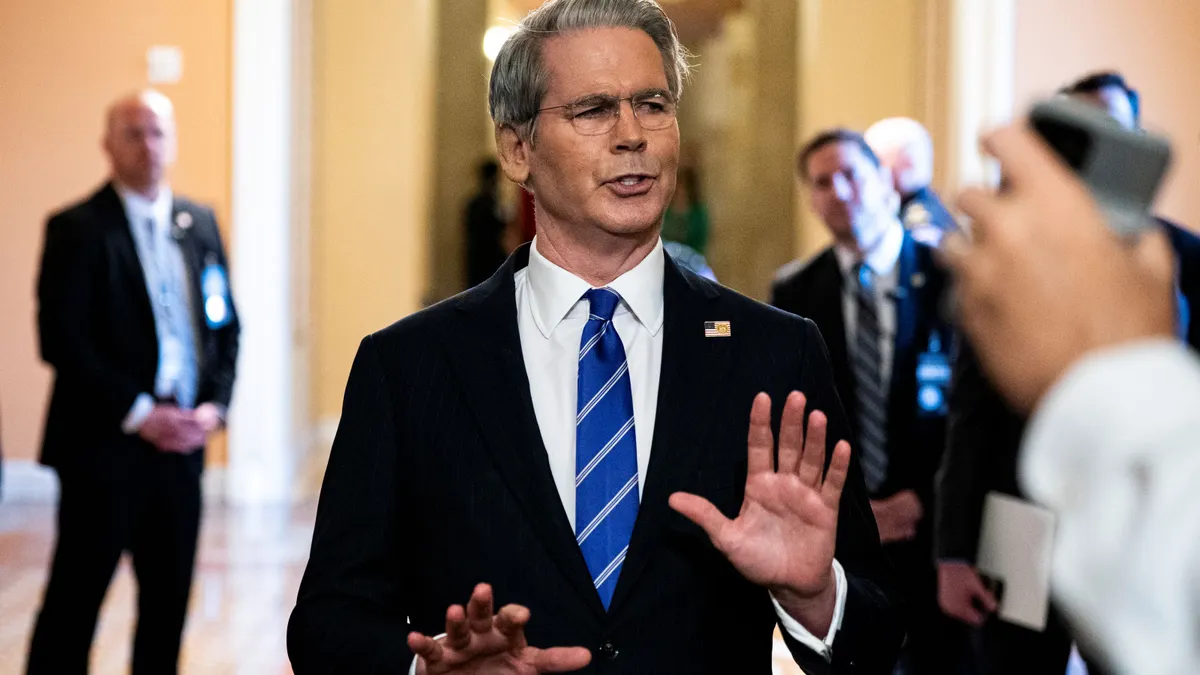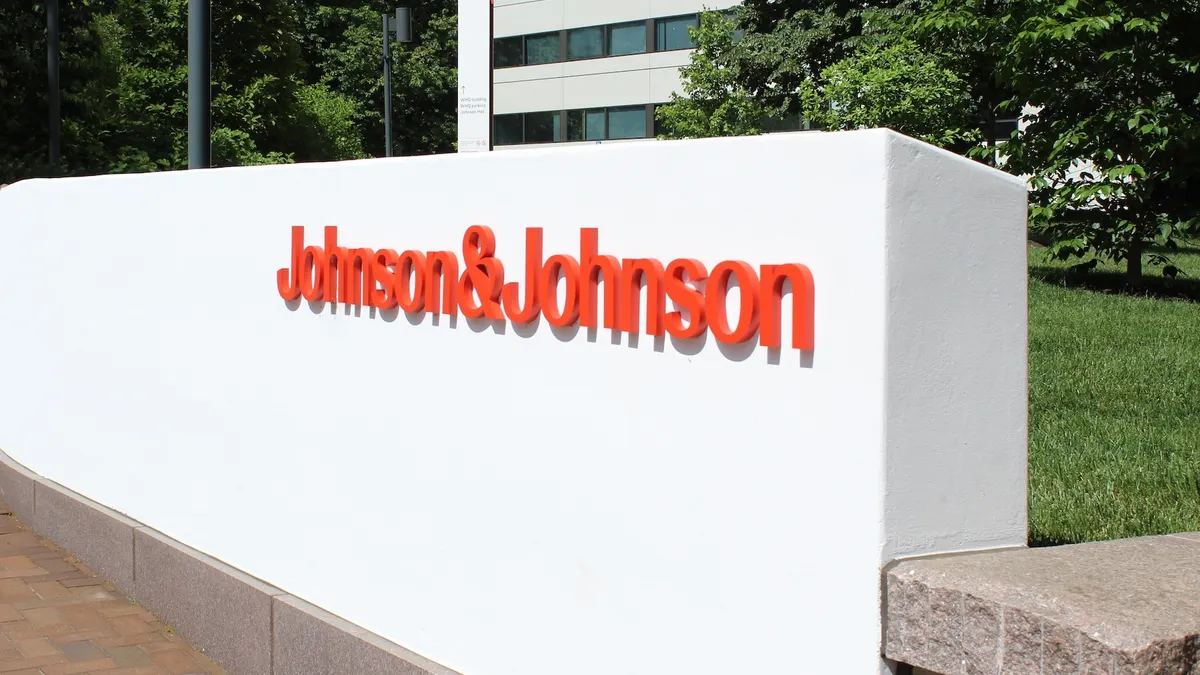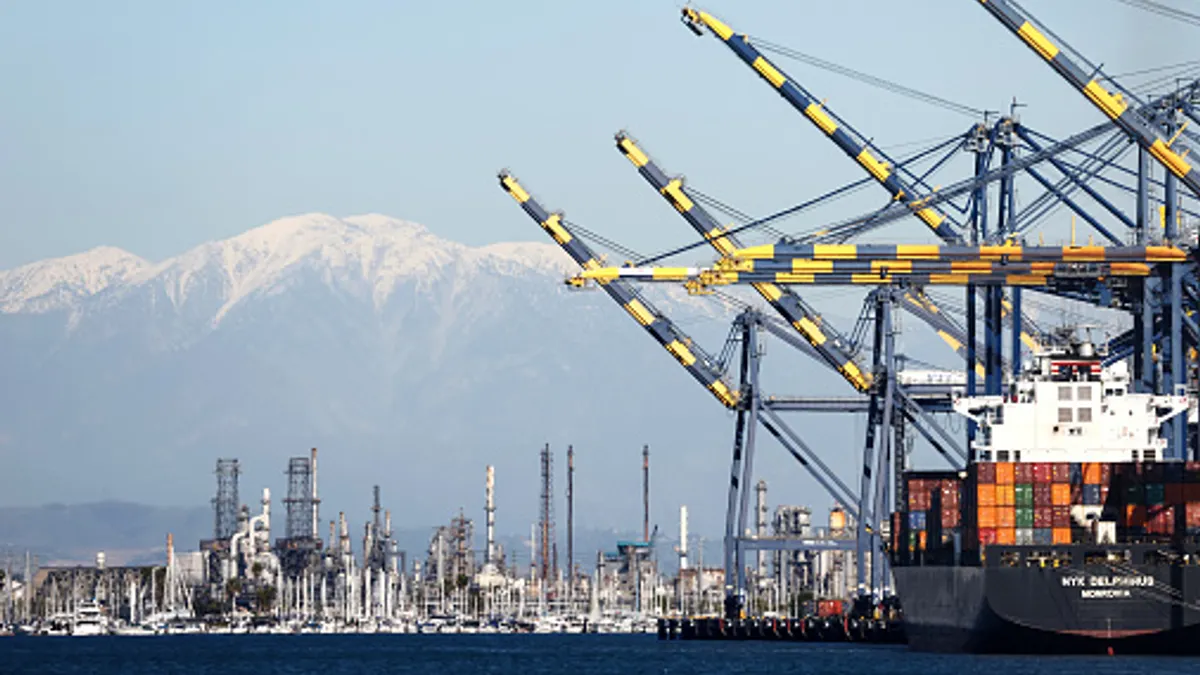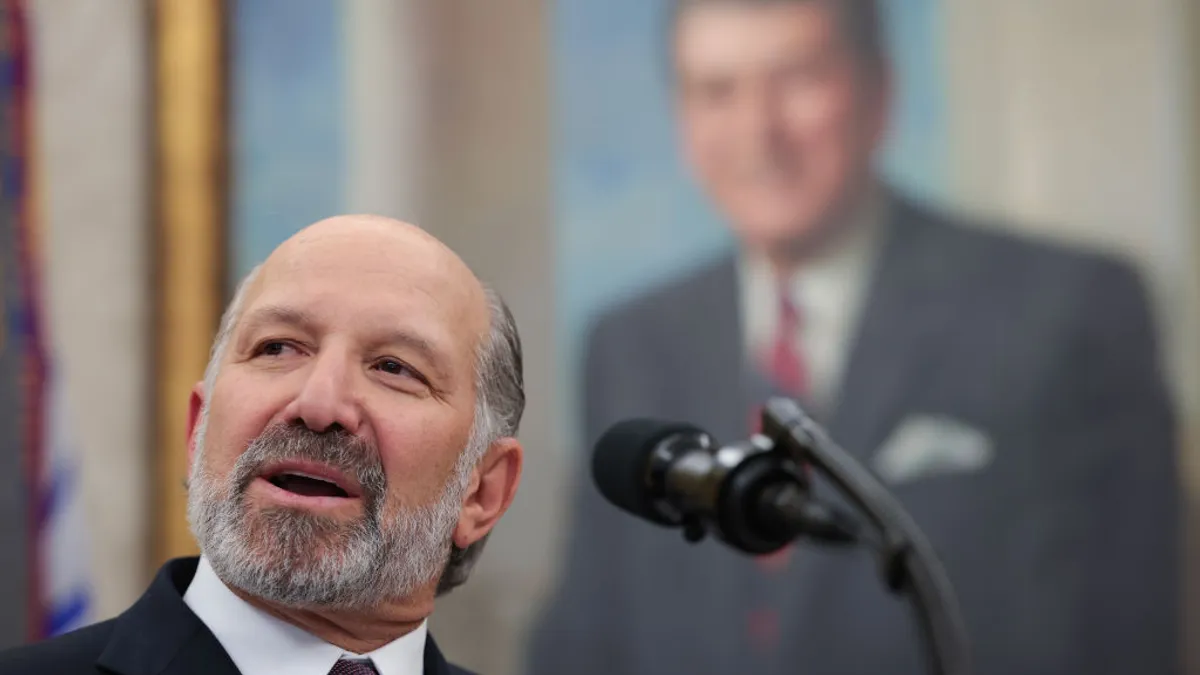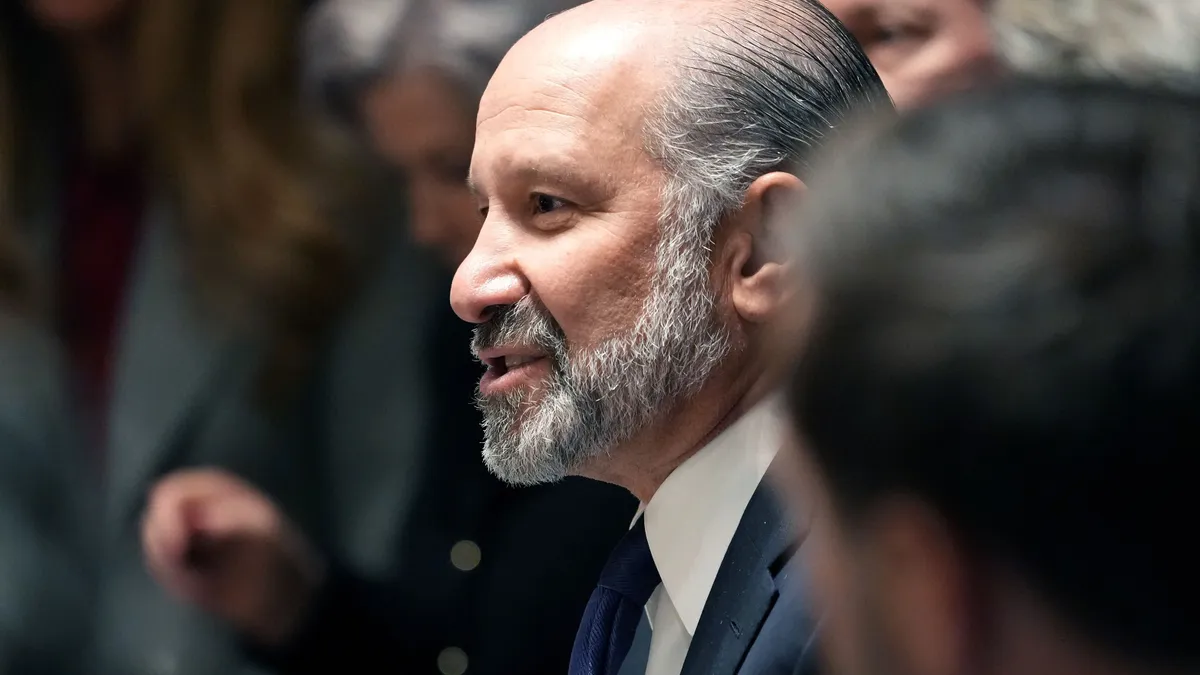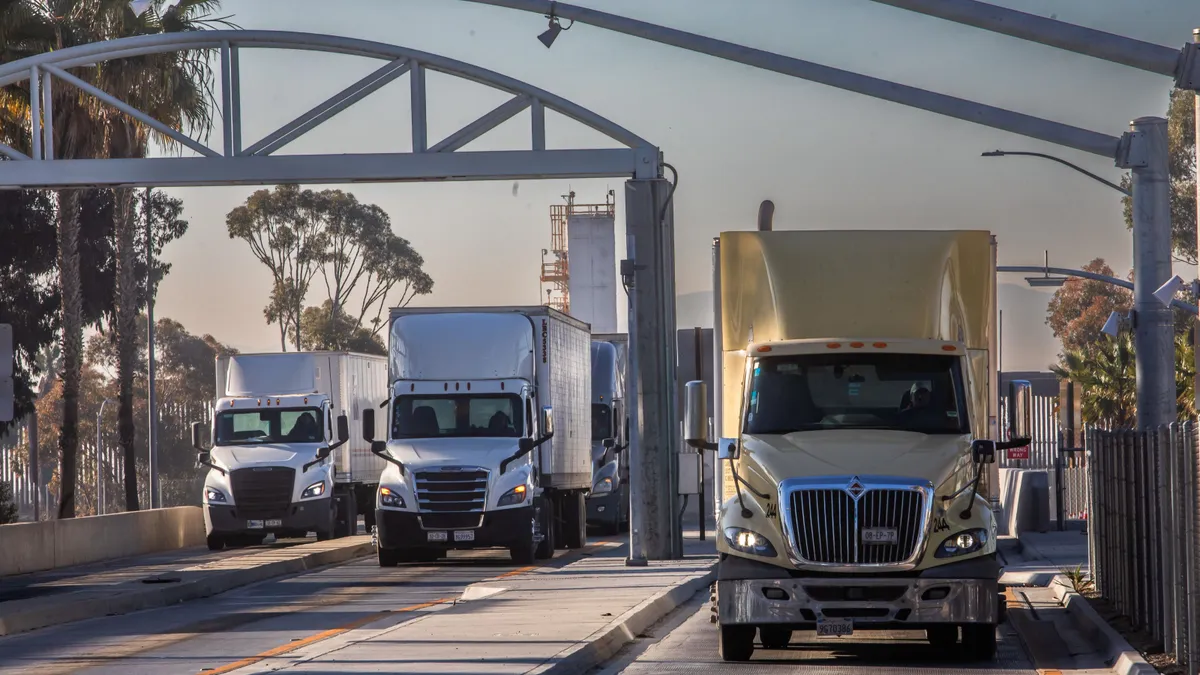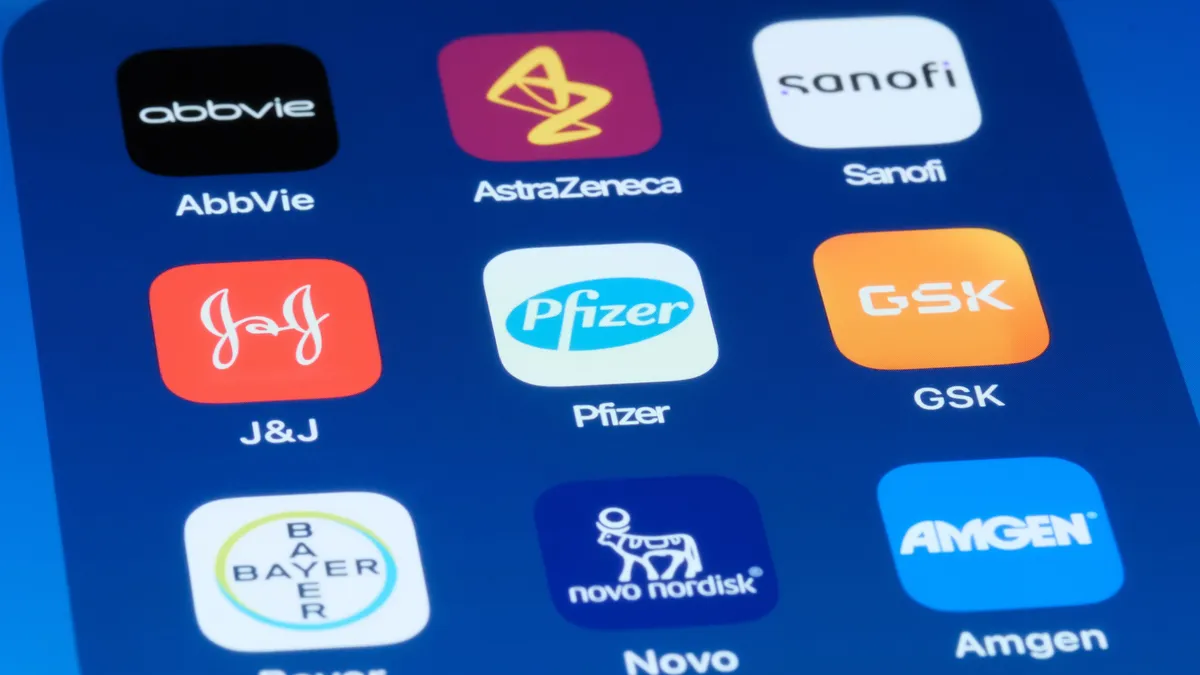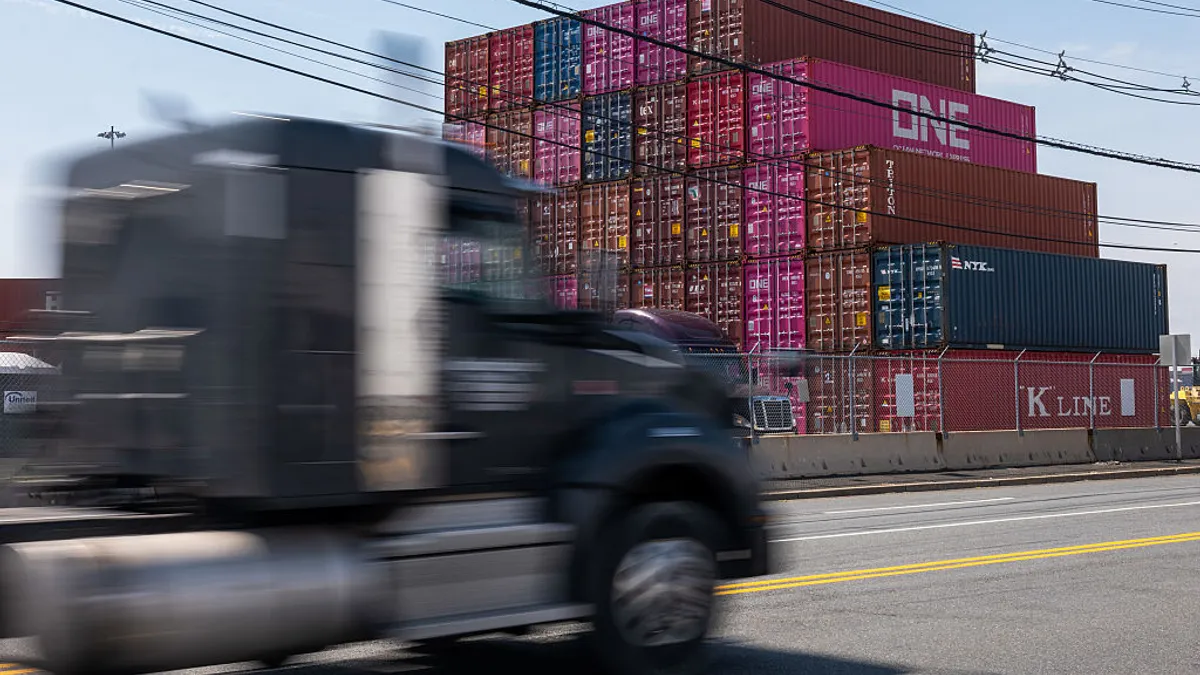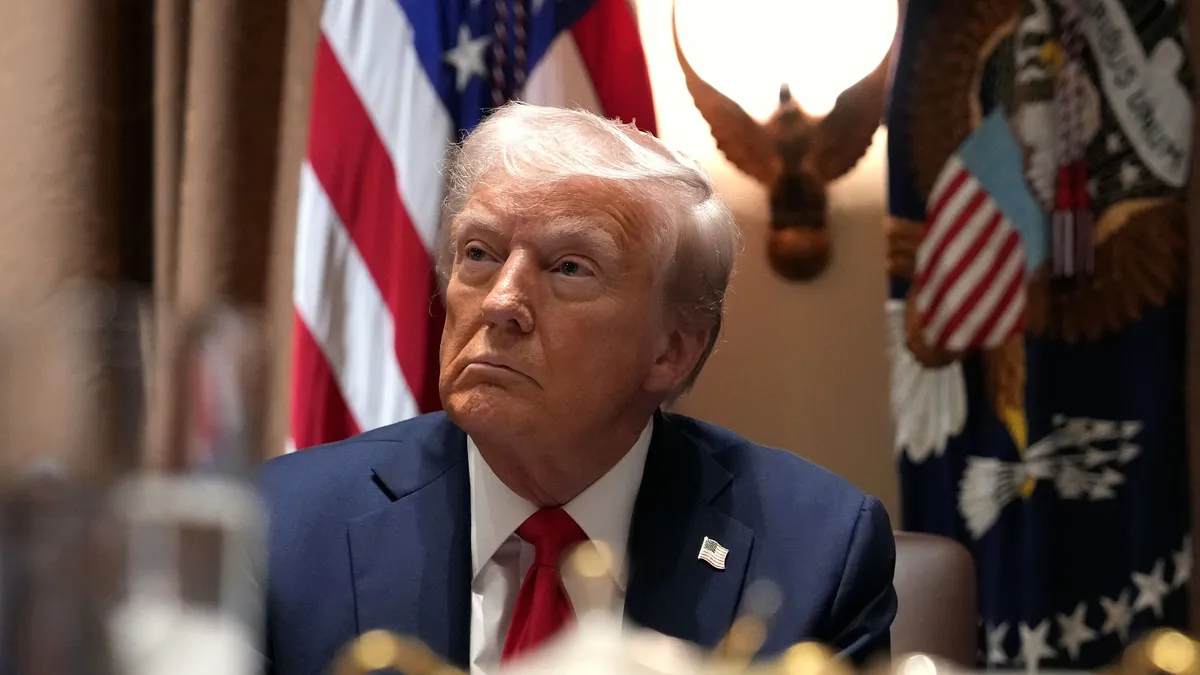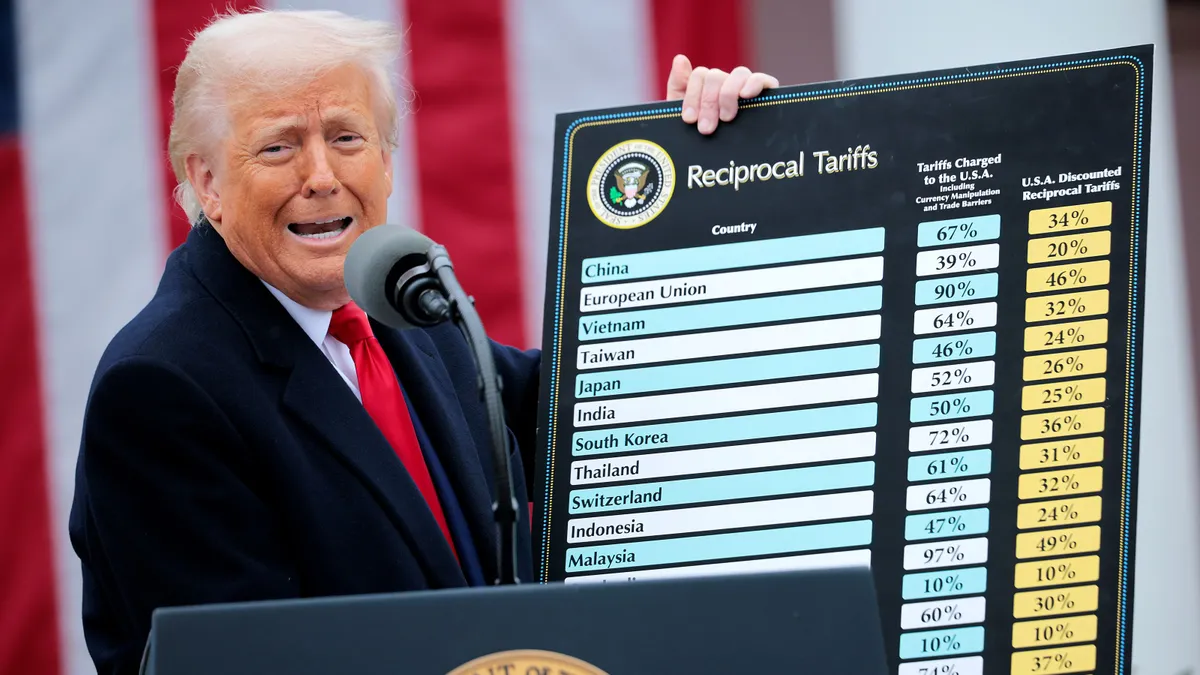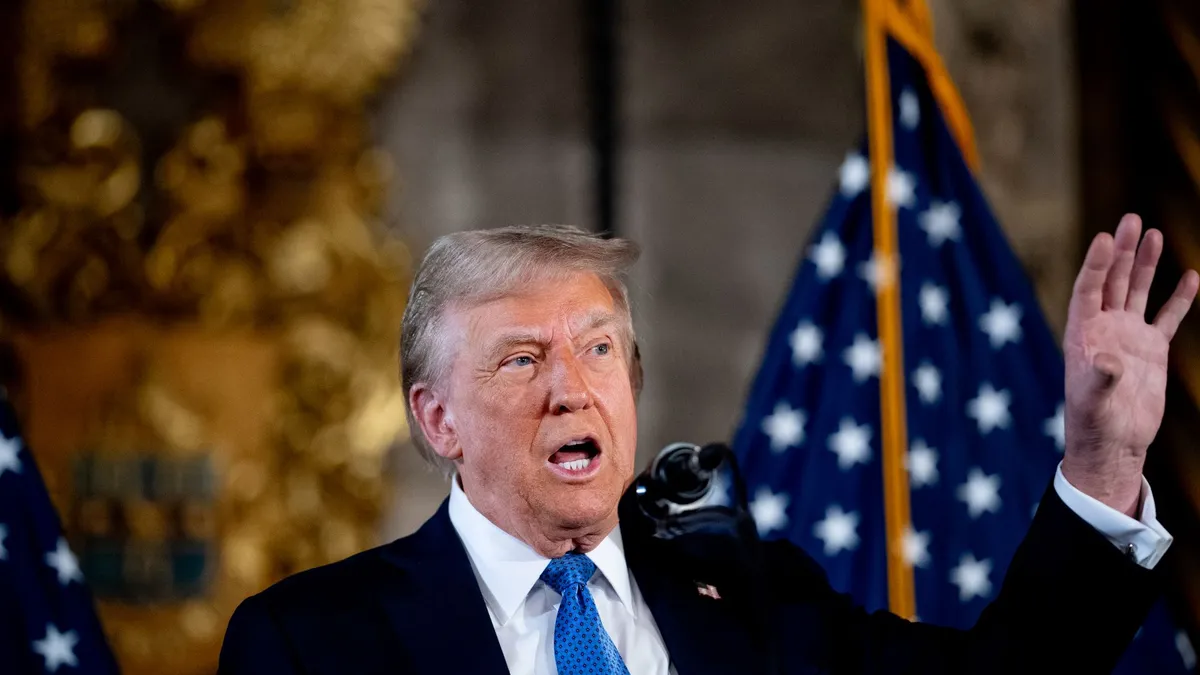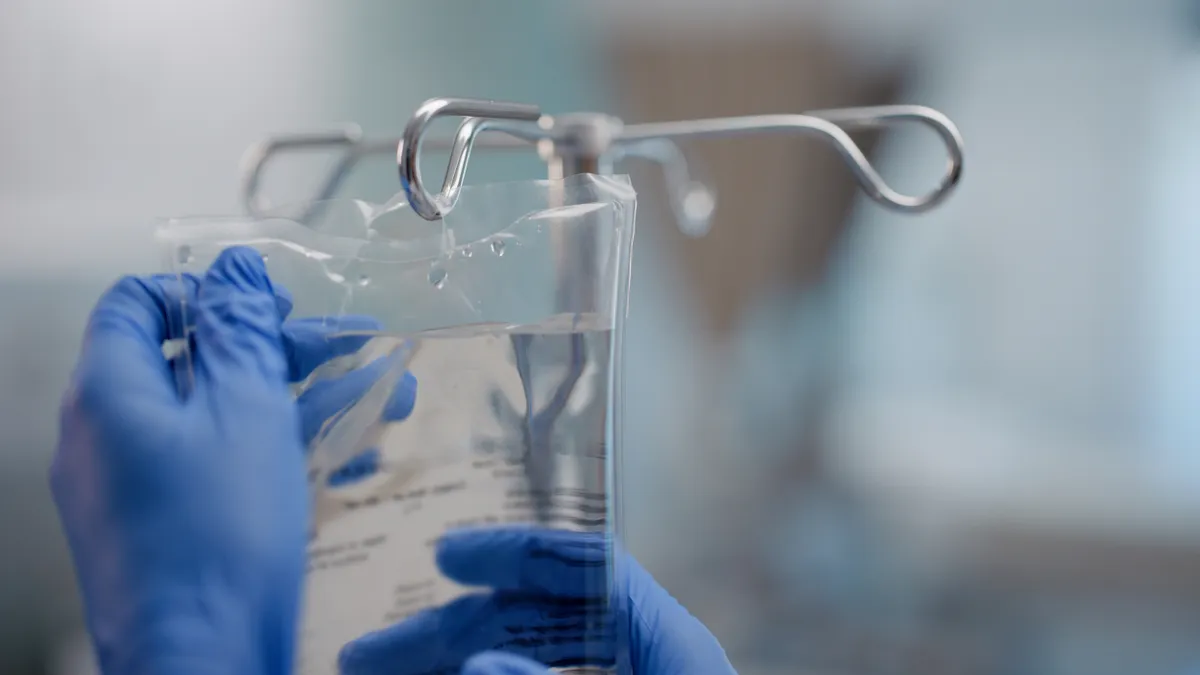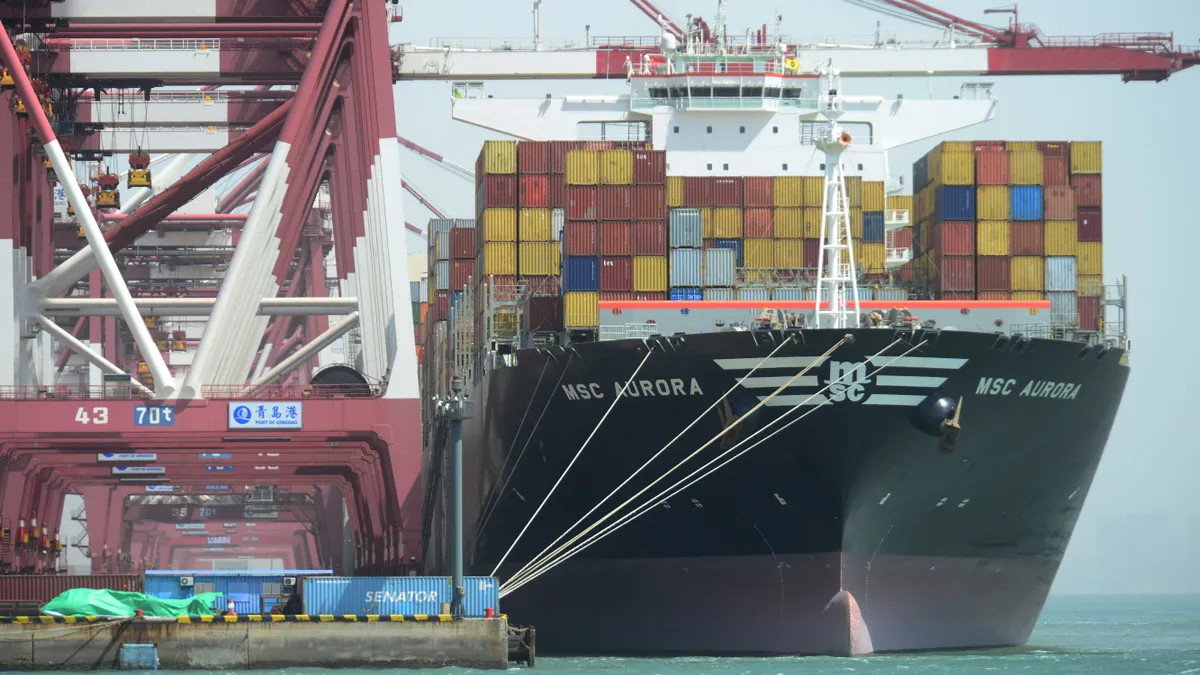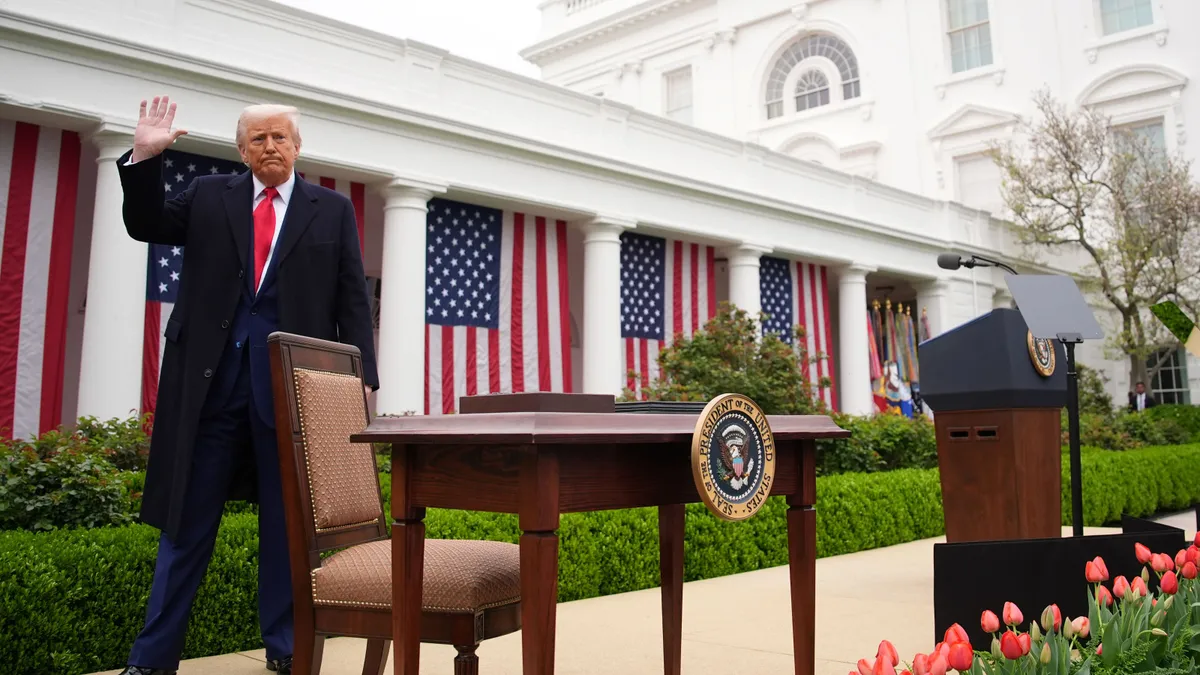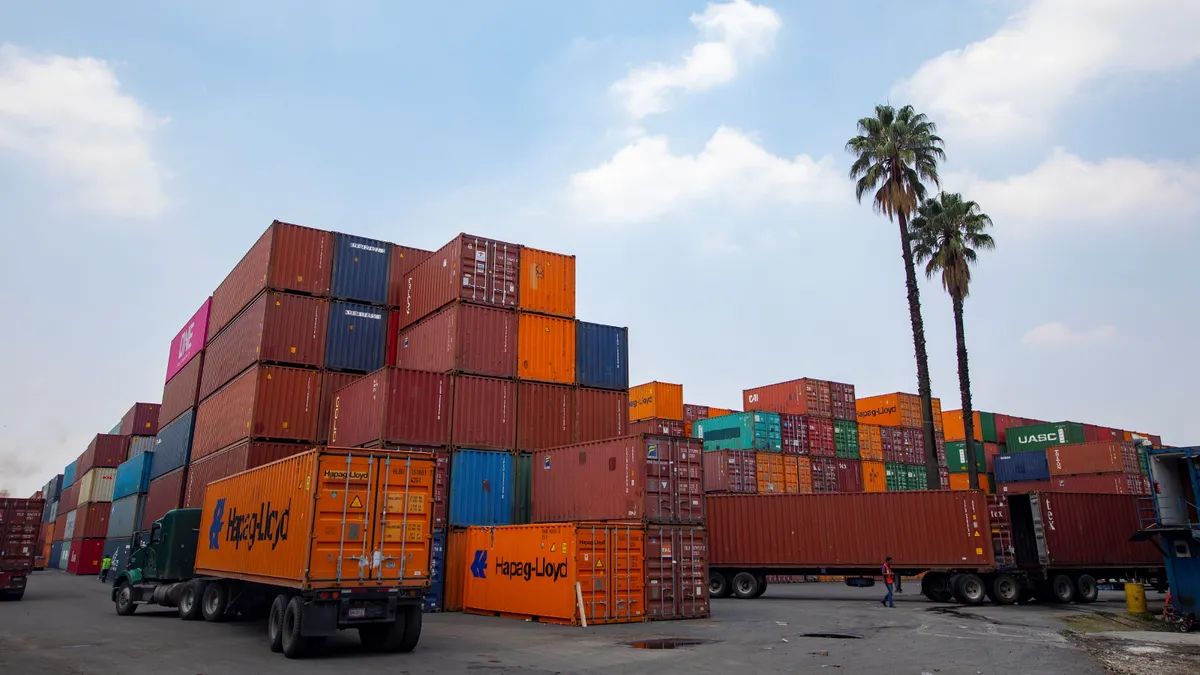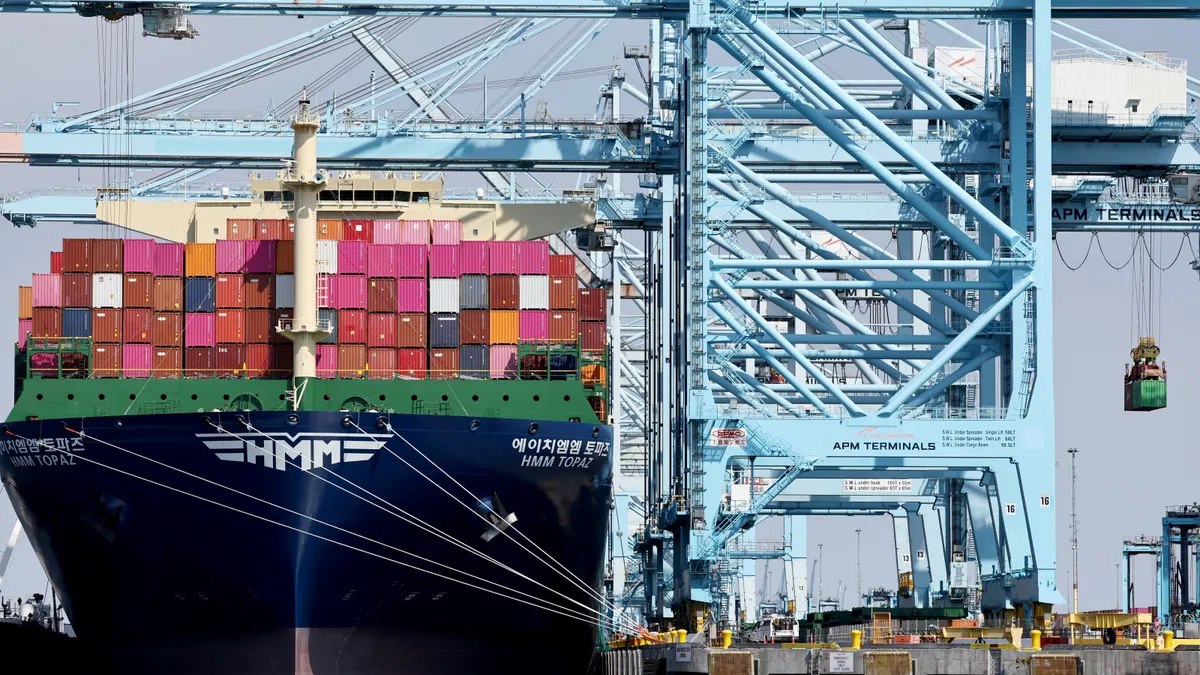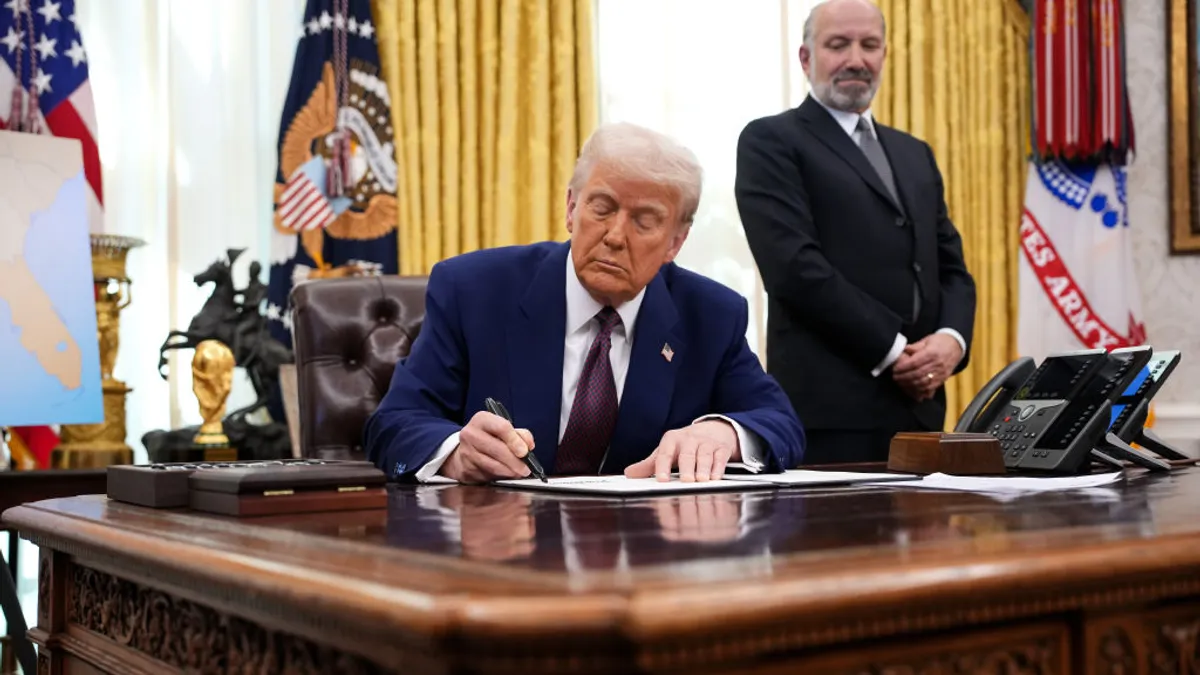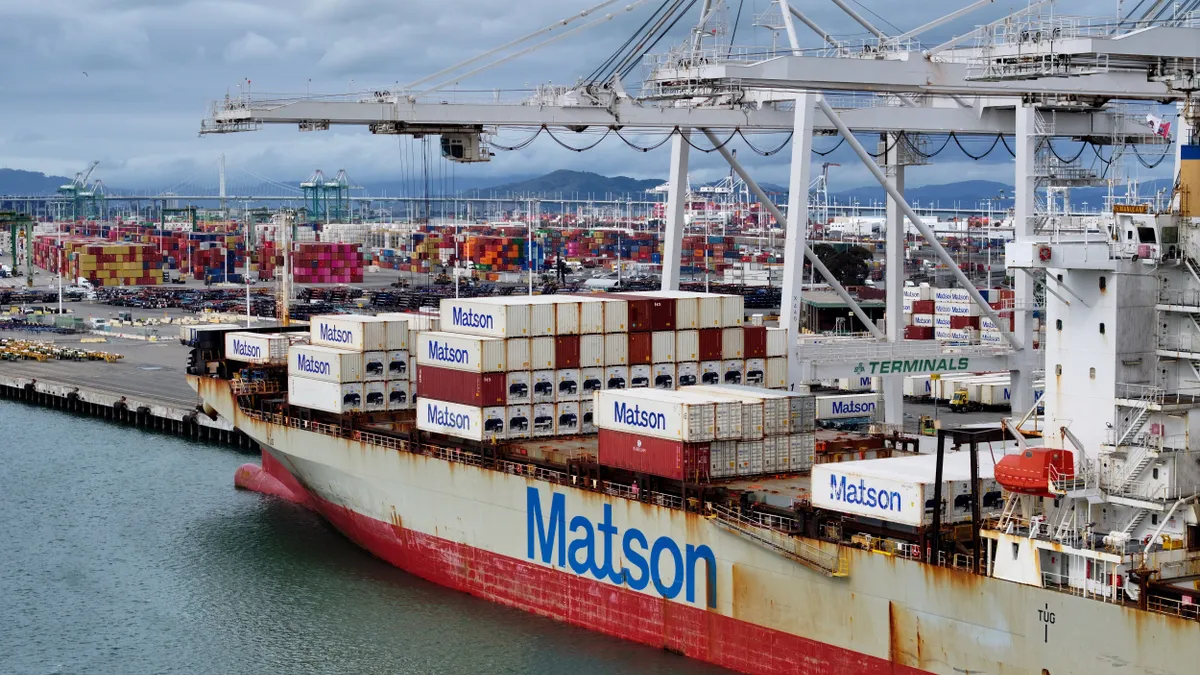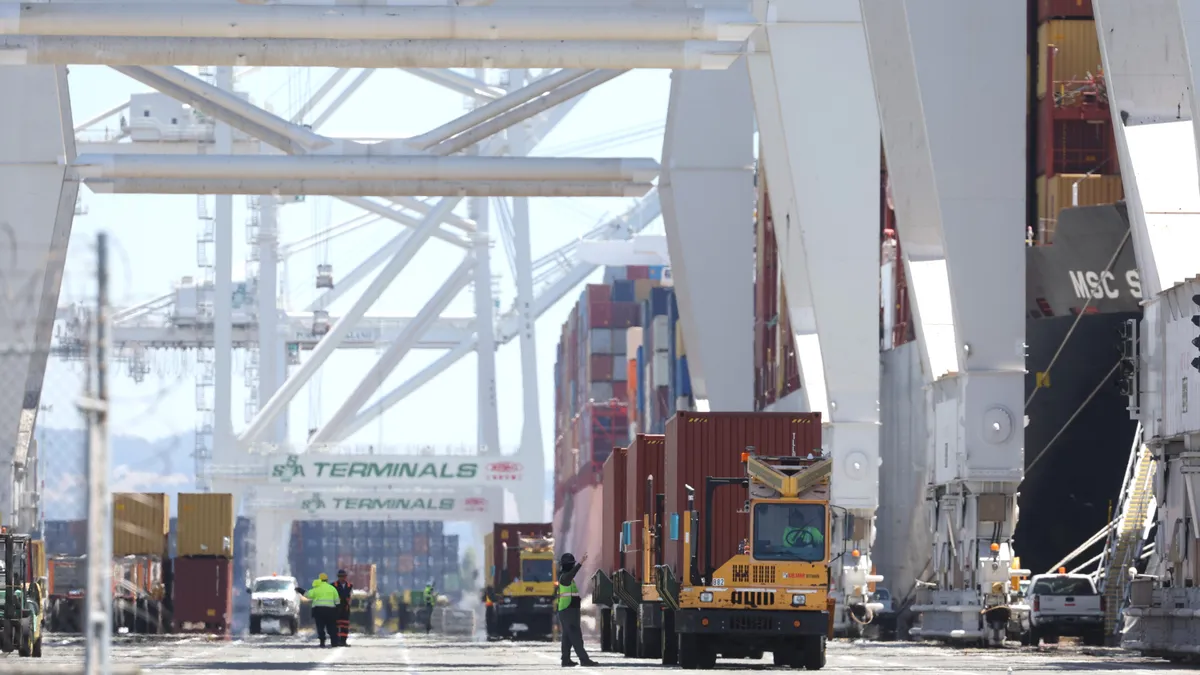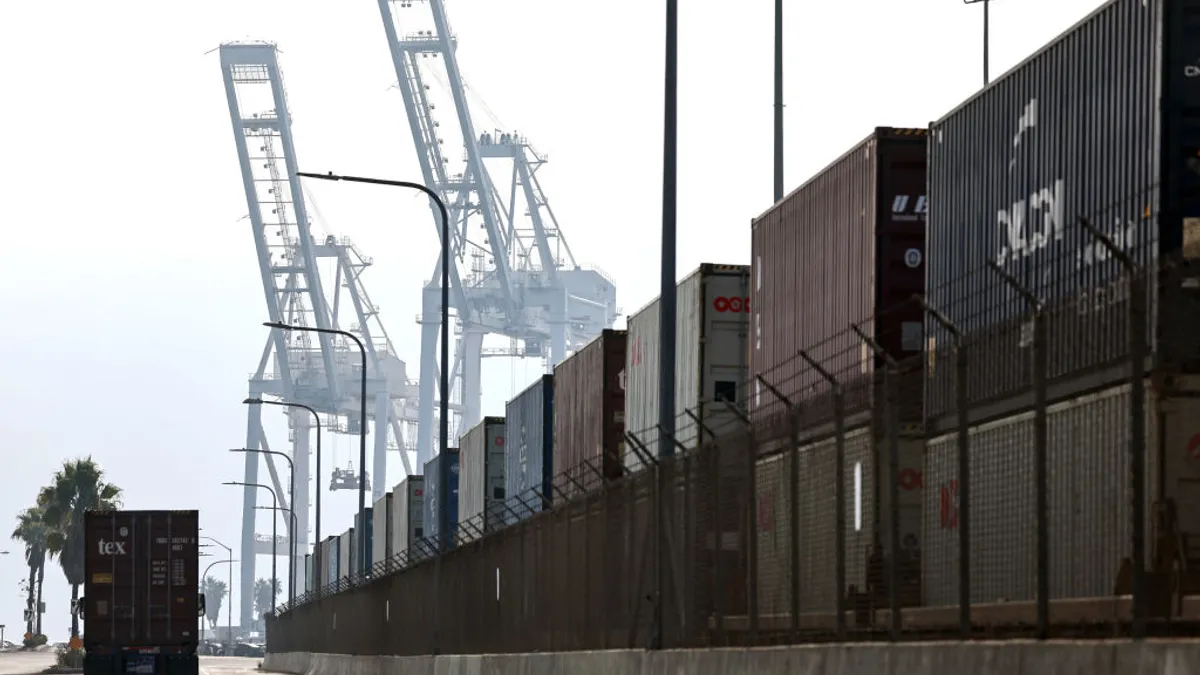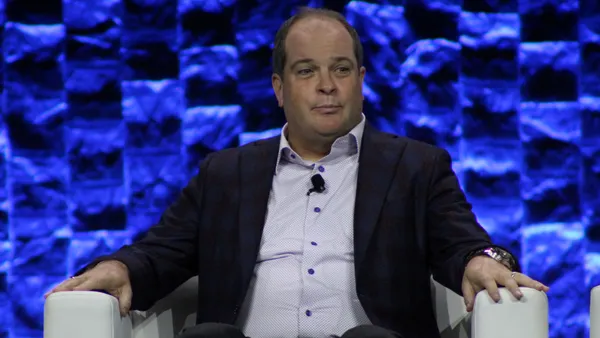The U.S. and the European Union have established the framework of a deal that could set tariffs to 15% for most imports from the bloc.
As part of the pact, the EU would also purchase $750 billion worth of U.S. energy exports over the next three years, while investing $600 billion into the country, President Donald Trump said during a Sunday press briefing alongside European Commission President Ursula von der Leyen.
The 15% tariff would be a flat rate across most EU exports, including cars, semiconductors and pharmaceutical products, von der Leyen said in a separate briefing Sunday. She said the duty rate is all-inclusive and includes no stacking.
Although von der Leyen said pharmaceuticals were covered under the new tariff rate, Trump said potential tariffs on such products would not be part of the deal. The U.S. is currently conducting several Section 232 investigations, including one into pharmaceutical imports. Such reviews have previously served as precursors to levies on goods such as steel and aluminum.
“It's agreed that we have 15% for pharmaceuticals. Whatever the decisions later on is of the president of the United States, how to deal with pharmaceuticals in general, globally, that's on a different sheet of paper,” von der Leyen said.
The EU and the U.S. also agreed to zero-for-zero tariffs on “a number of strategic products,” including aircraft and component parts, certain chemicals, semiconductor equipment, certain agricultural products, and natural resources and critical raw materials, per von der Leyen.
“And we will keep working to add more products to this list,” von der Leyen said, adding that the trading partners would be working toward a quota system for steel and aluminum imports, which currently face a 50% U.S. tariff globally.
“This deal provides a framework from which we will further reduce tariffs on more products, address non-tariff barriers and cooperate on economic security, because when the European Union and the United States work together as partners, the benefits are tangible on both sides,” von der Leyen said, adding that "details have to be sorted out” in the coming weeks.
An exact timeline for finalization and implementation of the agreement was not immediately provided by either the U.S. or the EU.
The two sides came to terms days before an Aug. 1 deadline on which country-specific reciprocal tariffs from the U.S. are scheduled to go back into effect. The country-specific levies have been paused since April 9 in favor of a baseline rate of 10%.
Trump said Sunday that his administration will send letters to countries this week confirming or clarifying the tariff rate their imports will face on Aug. 1. Imports from the EU were scheduled to incur a 30% tariff when the pause lifts next week, Trump said in a letter shared on social media earlier this month.
The EU is the U.S.’ largest trading partner, accounting for $606 billion of stateside imports in 2024, according to U.S. International Trade Commission data. The U.S. also exported $370 billion worth of goods to the bloc, equating to a $236 billion trade deficit, the U.S.’ second-highest with any country behind China.
The Trump administration has said it has reached deals with several other trading partners ahead of its Aug. 1 deadline, including Japan, Indonesia and the UK, while other negotiations are ongoing.


